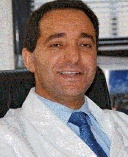Optimising peri-operative procedures
Many physiological and observational studies indicate that non-invasive ventilation (NIV) after both thoracic and abdominal surgery is helpful and non-randomised trials have indeed confirmed the benefits.

While there is a global consensus that more research on NIV is required, the European Guidelines recommend but do not mandate NIV in postoperative period. The American and Canadian guidelines at this point do not yet recommend non-invasive ventilation.
Dr Samir Jaber, Professor of Anaesthesiology and Critical Care Medicine and Head of Department at the University Hospital of Montpellier, France, is the coordinator and main investigator of NIVAS (Non-Invasive Ventilation after Abdominal Surgery), a randomised controlled trail, 20-centre (planned to include 300 patients) study designed to evaluate non-invasive ventilation in patients who developed acute respiratory failure after abdominal surgery. Results are expected to be published next year.
Anaesthesia, post-operative pain and surgery can induce respiratory modifications such as hypoxaemia, pulmonary volume decrease and atelectasis associated with a restrictive syndrome and diaphragm dysfunction, which occur early after surgery and may cause acute respiratory failure (ARF). Maintaining adequate oxygenation in the post-operative period is crucial, especially when pulmonary complications such as ARF occur. Non-invasive ventilation refers to respiratory support techniques without endotracheal intubation.
Today, the clinical team usually selects the type of post-surgical ventilation. ‘The most important factor for the success of non-invasive ventilation is the experience and the expertise of the medical (anaesthetists and surgeons) and paramedical (nurses, physiotherapist...) team,’ explains Prof. Jaber, a ventilation expert for over 20 years. ‘No experience frequently leads to poor outcomes.’ He hopes, with his current study, to confirm the benefits of non-invasive ventilation in patients suffering post-surgical respiratory distress.
Non-invasive ventilation after surgery has two potential objectives: First, as a preventive measure to avoid acute respiratory failure in high-risk patients - for example after abdominal or thoracic surgery or in obese patients. Second, post-operative NIV is used curatively for patients with acute respiratory distress in order to avoid intubation. It also seems that NIV patients recover better. Depending on the type of surgery and on the team the hospital stay might be reduced by two to four days and a recent study indicates that mortality decreases, at least after thoracic surgery.
Lung-protective ventilation in the operation room
Professor Jaber focuses not only on post-operative ventilation but emphasises the importance of ventilation during the intervention. ‘We try to optimise the ventilation setting in the OR by using protective lung ventilation in the same way we do in ICU patients. For patients suffering acute respiratory distress syndrome we apply so-called lung-protective ventilation: a low tidal volume of 6 ml per kilogram instead of 10 or 12 ml and a positive end expiratory pressure (PEEP) between 6 and 8 cm H2O.’ In August 2013, the New England Journal for Medicine published the results of a study by Professor Jaber and his team showing that, in abdominal surgery patients with healthy lung function, the protocol described above significantly decreased post-operative respiratory complications compared to standard ventilation with a tidal volume with 10 ml per kilogram and without PEEP. ‘With lung-protective ventilation we decreased the post-operative complication rate from 27% to 12%.
‘While this is good news, it does mean that at least 10-20% of the patients will still develop complications; that’s why we use non-invasive ventilation after surgery. My approach is not only to see what happens after or during surgery. We absolutely have to look at the entire procedure. Therefore, I prefer the term peri-operative ventilation, which starts with general anaesthesia and ends after extubation of the patient. Also, it’s better to prevent than cure.’
‘The most important risk associated with non-invasive ventilation is the patient’s negative response to the procedure - and delayed intubation. Intubating a patient in poor condition is extremely risky and will frequently lead to poor outcomes. Thus, non-invasive ventilation may be indicated for patients who underwent surgery. However, before applying non-invasive ventilation to patients with acute respiratory distress it must be ensured that no post-surgical complications are present and, most importantly, if the patient’s status does not improve, discontinue non-invasive ventilation immediately and intubate!’
Profile:
Following medical studies at UFR Cochin-Port Royal in Paris, Professor Samir Jaber began work as a physician in CHU Creteil, where he gained his degrees (DESC) in re-animation (DESC) and ventilation (DEA). He has been Professor of Anaesthesiology and Critical Medicine and Head of Department of Critical Care Medicine and Anaesthesiology at Montpellier School of Medicine and Saint Eloi University Hospital in Montpellier since 2007. Since January 2013, he has also served as the president of the scientific committee of the Société Francaise d’Anesthésie et de Réanimation.
03.03.2014











